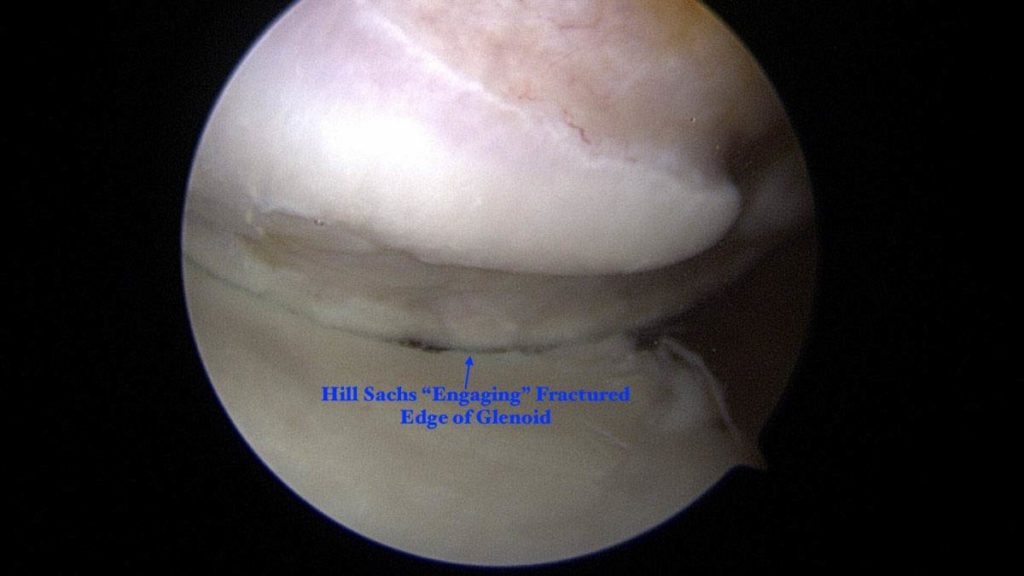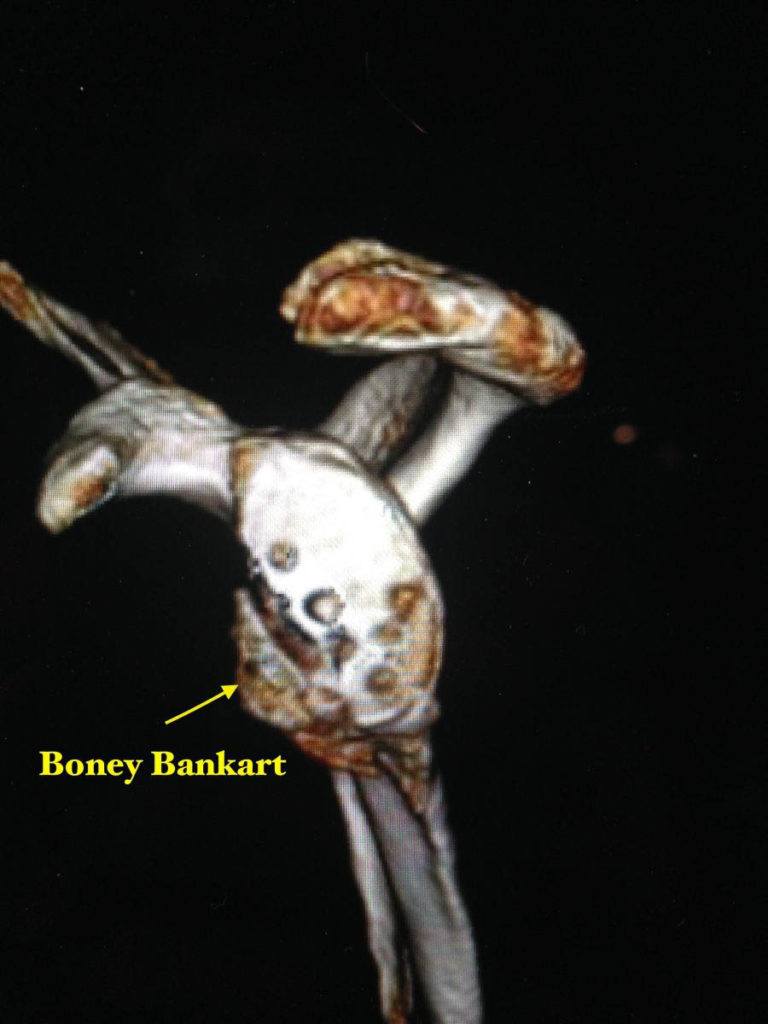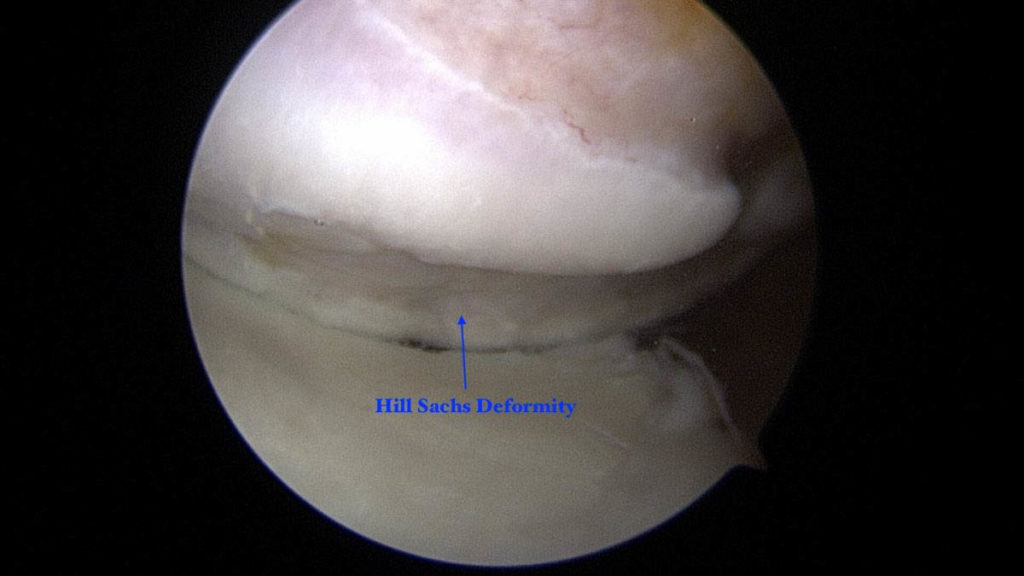When shoulder dislocations occur the ligaments that keep the shoulder in place tear. They typically tear off the glenoid (socket) side of the joint along with the labrum. Less commonly as the shoulder dislocates it may break off the rim of the glenoid creating a bone deficit on the glenoid. When this occurs there is less surface area on the glenoid and the shoulder is more likely to have recurrent dislocations.
Additionally, as the shoulder dislocates, the humeral head (ball) impacts the edge of the glenoid and a dent in the humeral head occurs (Hill Sachs Lesion).

When these 2 injuries are combined, the shoulder can dislocate very easily if the Hill Sachs Lesion “engages” the edge of the fractured glenoid.
It is critical to eliminate this “engagement” in order to eliminate the instability. Even if the ligaments are repaired, they will simply re-tear as soon as the lesion engages and the shoulder will dislocate.
If your surgeon can repair the boney Bankart lesion, this will oftentimes prevent further engagement. However, there are times that a simple repair will not prevent this and a boney reconstruction of the glenoid becomes necessary.
The best way to prevent this from happening is to repair these shoulders before bone deficiency occurs. It is rare for these lesions to occur after a single dislocation, but with recurrent episodes, they become increasingly common.
Please feel free to email me if you have any questions.
Warm Regards,
Christopher Jones





